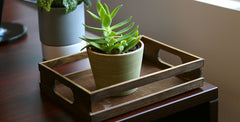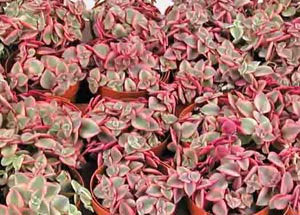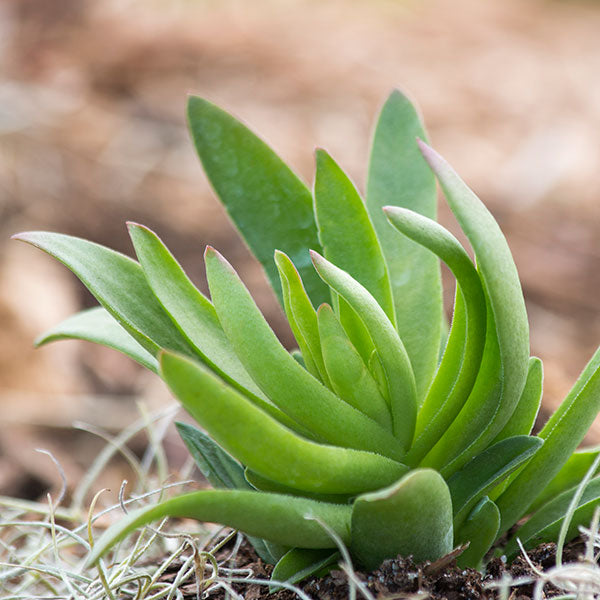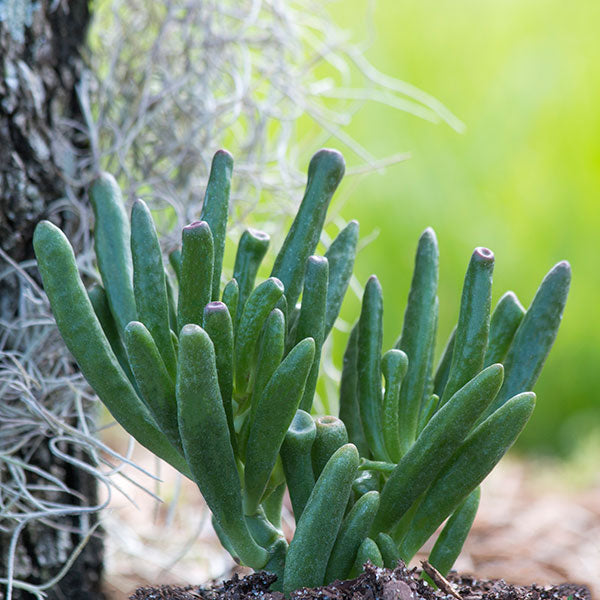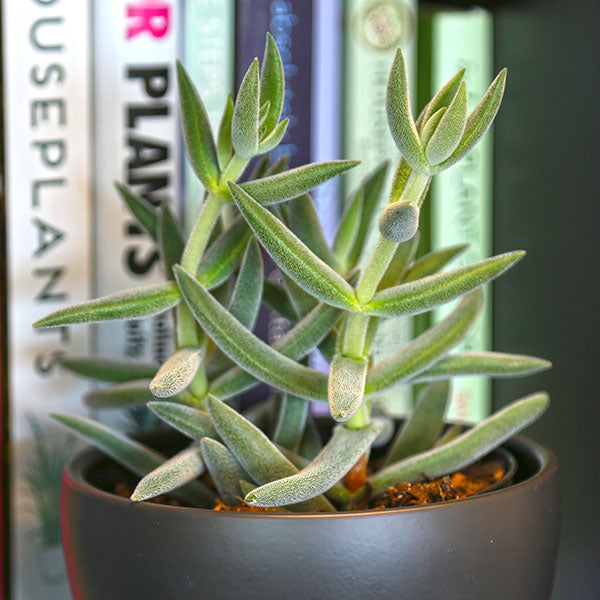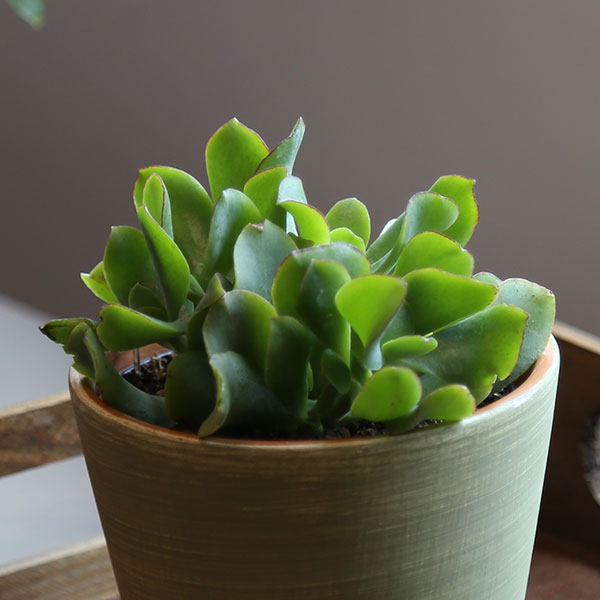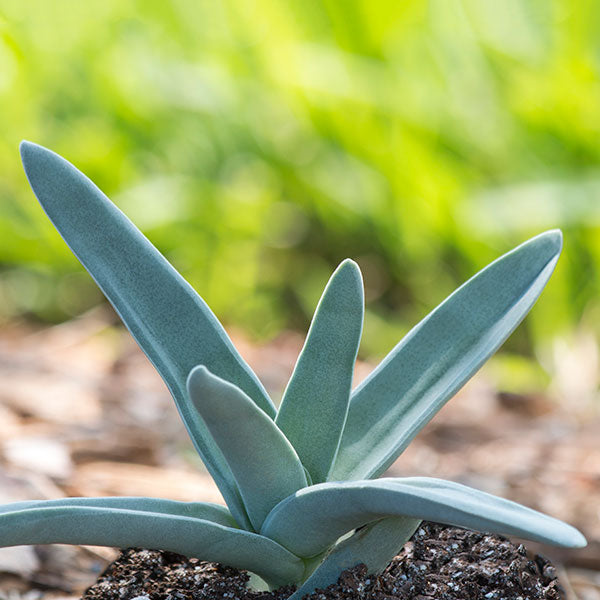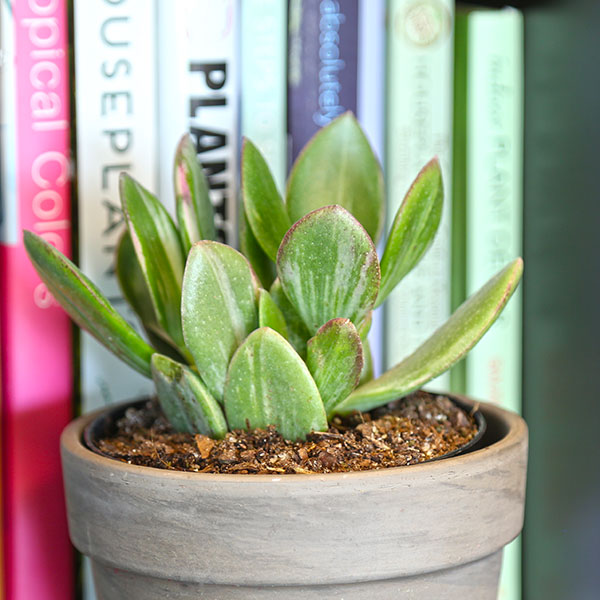Jade Plant (Crassula spp.)
Jade Plant Plant Features
Crassulas are in an amazingly diverse family of succulents. They offer fashionable looks with low water needs indoors and out. One of the most popular crassula species is jade plant (Crassula ovata). Jade plant grows a tree-like trunk and thick, fleshy dark green leaves. Other types feature different leaf sizes and colors -- from low-growing calico kitten to pine-like Crassula tetragona.Most of the crassula varieties we grow are well suited to bright spots indoors. Enjoy these easy-care succulents on window sills and under plant lights. They thrive on desks and tabletops. A collection of several different crassulas gives your favorite space a fun sculptural look.
Their succulent nature means many crassulas are also ideal for use in DIY projects. Add crassulas alongside kalanchoes or echeverias in living wall or hanging planter projects. Outdoors, most thrive year-round in subtropical, frost-free areas. In colder areas, crassulas are good annuals or can be brought indoors before cold temperatures hit in winter.
Dig into our tips for selecting the best succulents for your home or yard.
Jade Plant Growing Instructions
Though crassulas are a wide-ranging family of succulents, most common varieties have similar care needs. Indoors, give them lots of light -- the more the better -- to keep them in good form and color. Many, such as jade plant, tolerate spots with medium light, but don’t thrive in these conditions.Like many succulents, it’s better to water crassulas too little than too much. They can quickly rot if the potting mix stays too wet. We get a lot of questions asking how often to water crassulas indoors. The best answer is when the top couple of inches of the potting mix dry to the touch. How often that is varies for everyone. It's based on conditions such as light, temperature, humidity levels, the makeup of the potting mix, the size of the pot, and other factors.
Most are slow growers, so you don’t need to fertilize crassulas a lot. You can get by feeding them as little as once or twice a year (in spring or summer). Use a general-purpose fertilizer. If you’d like to push them to grow faster, you can fertilize more often. No matter what type of fertilizer you use, never exceed usage recommendations on the product packaging. Too much fertilizer can burn the roots or even kill them.
Note: Crassulas and other succulents are not intended for human or animal consumption.
-
Water
Low water needs
-
Light
Indoors: High light
Outside: Sun
-
Colors
Blue
Pink
Purple
Red
Variegated
White
-
Special Features
Colorful foliage
Purifies the air
Super-easy to grow
Complement your Jade Plant
Snake PlantSnake plant's low water needs and dramatic texture makes it a perfect partner for practically any crassula variety.
Kalanchoe
Most kalanchoe varieties grow beautifully with crassulas.
Echeveria
Enjoy star-shaped echeverias with upright crassula varieties.
